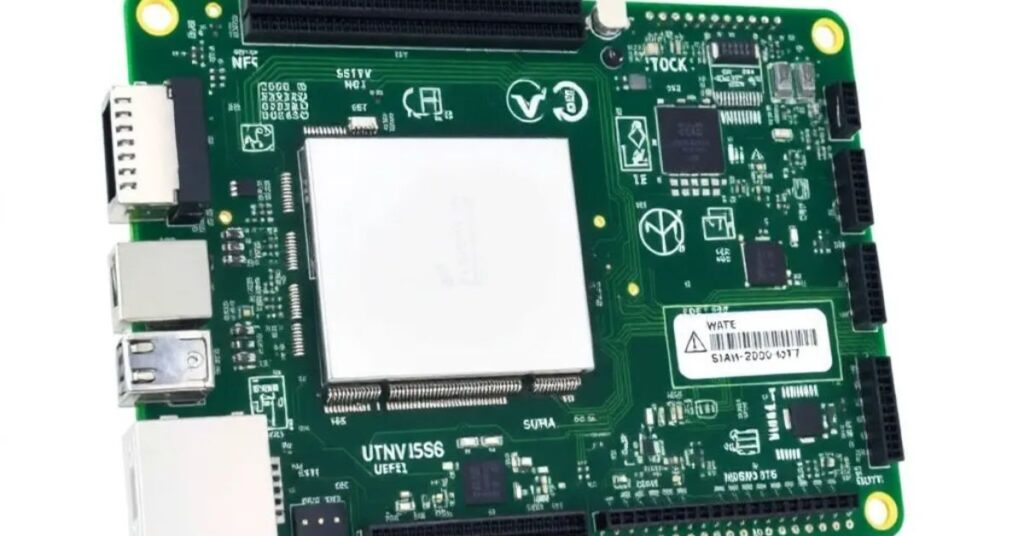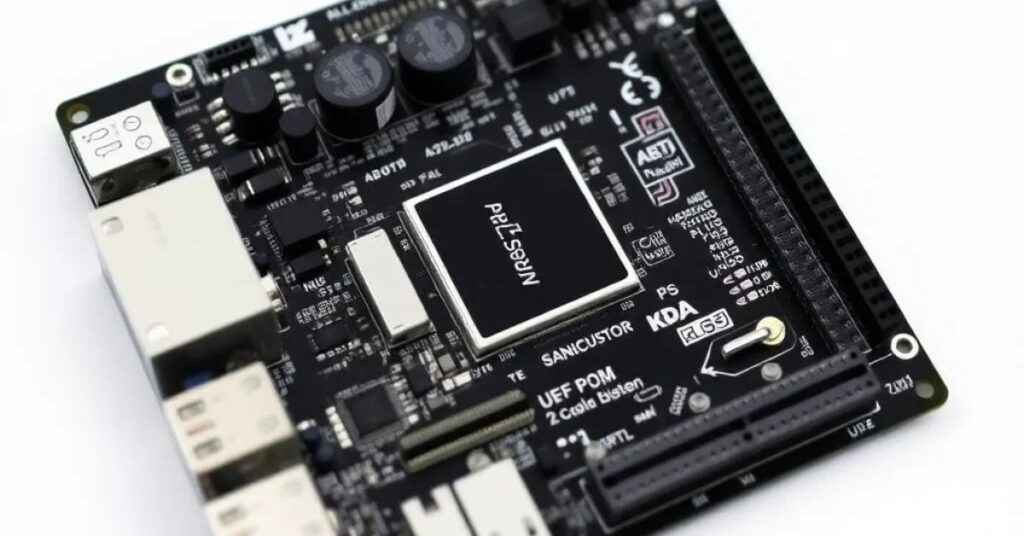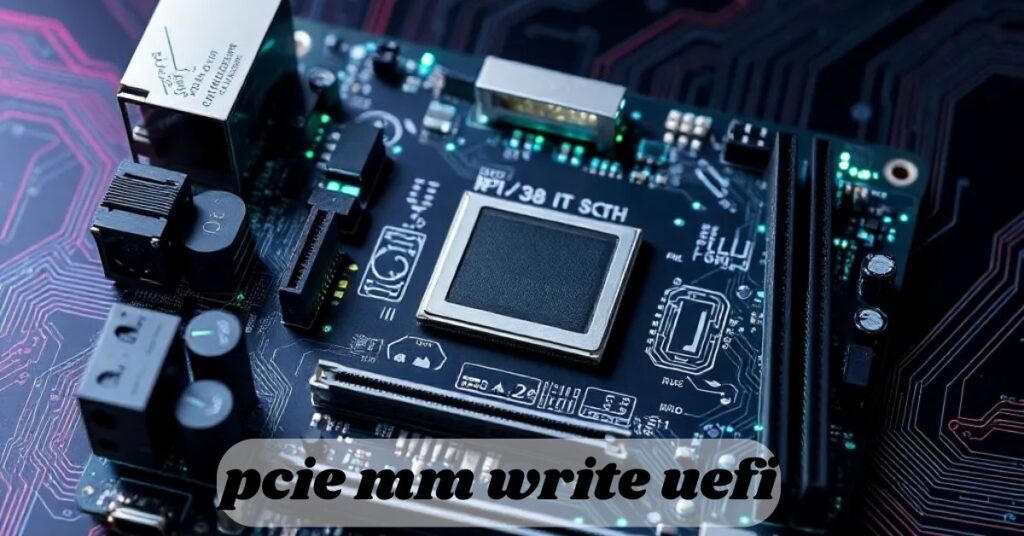In the world of modern computing, understanding PCIe MM write UEFI is essential for anyone looking to optimize their system’s performance. PCIe MM write refers to a method that allows your computer to communicate directly with its hardware components, ensuring faster data transfer and better efficiency. By mastering this process, you can enhance your device’s capabilities and make the most out of your hardware setup.
As technology evolves, the importance of efficient data handling becomes increasingly clear. PCIe MM write UEFI serves as a bridge between the firmware and your hardware, enabling seamless interactions that improve overall system functionality. Whether you’re a gamer seeking low-latency performance or a developer looking to build custom applications, grasping the concepts behind PCIe MM write UEFI will empower you to make informed decisions about your system’s configuration.
What is PCIe MM Write UEFI? An Overview for Beginners
PCIe MM write UEFI is a fundamental concept in modern computing, helping devices like graphics cards and storage drives communicate efficiently with the CPU. It stands for Peripheral Component Interconnect Express Memory-Mapped Write through the Unified Extensible Firmware Interface. This method allows your computer to transfer data quickly and effectively. By understanding this concept, you can appreciate how your system works and make informed decisions about hardware upgrades.
At its core, PCIe MM write involves memory-mapped I/O (MMIO). This means that specific memory regions are assigned to PCIe devices, enabling the CPU to read and write data directly. Instead of issuing complicated commands to communicate with hardware, the CPU can access these devices as if they were part of the system’s memory. This approach greatly simplifies the interaction between hardware components and enhances the overall speed of data transfer.
The importance of PCIe MM write UEFI becomes even clearer when you consider how it impacts performance. In high-demand scenarios, such as gaming or data processing, fast communication is crucial. With PCIe MM write, devices can operate with lower latency, meaning they respond more quickly to commands. This capability allows users to enjoy smoother experiences, whether they’re playing the latest video games or running complex applications. As technology continues to advance, understanding PCIe MM write UEFI will be essential for anyone involved in computing.
The Importance of PCIe MM Write UEFI in Modern Computing
Understanding the importance of PCIe MM write UEFI is crucial in today’s fast-paced digital world. As computers become more powerful and complex, the methods we use to communicate with hardware must also evolve. PCIe (Peripheral Component Interconnect Express) is a high-speed interface standard that connects various components like GPUs, SSDs, and network cards to the motherboard. MM (Memory-Mapped) write operations are essential because they enable efficient data transfer, reducing latency and improving performance.
In modern computing, speed and efficiency are paramount. Whether you’re gaming, streaming, or running complex applications, every millisecond counts. PCIe MM write allows the CPU to communicate directly with connected devices through memory-mapped I/O. This means data can be sent and received quickly, ensuring that your system runs smoothly. By mastering PCIe MM write UEFI, you can unlock your hardware’s potential and create a seamless user experience.
Another significant aspect of PCIe MM write UEFI is its role in device initialization. During the boot-up process, UEFI firmware sets up the hardware components before the operating system loads. This ensures that devices are ready for use right away. Proper initialization can lead to faster boot times and improved overall system reliability. As more devices utilize PCIe interfaces, the importance of understanding and implementing PCIe MM write operations will only grow.
How PCIe MM Write UEFI Enhances System Performance
PCIe MM write UEFI significantly enhances system performance by optimizing the way data is transferred between the CPU and hardware components. When your computer uses PCIe MM write, it can send and receive information more quickly and directly. This direct communication reduces the time it takes for devices to respond, which is crucial for applications that demand real-time data processing, such as gaming and video editing.
One of the key benefits of PCIe MM write is its low-latency operation. Traditional methods of communication between the CPU and devices can introduce delays, which can be frustrating for users. With PCIe MM write, the data transfer happens almost instantly, making it ideal for scenarios where every millisecond matters. For instance, in gaming, faster data exchange can lead to smoother graphics and quicker response times, enhancing the overall gaming experience.

PCIe MM write UEFI allows for better resource management. As devices communicate more efficiently, the CPU can allocate resources more effectively, leading to improved multitasking capabilities. This means you can run multiple applications without experiencing slowdowns, making your computing experience more enjoyable. with PCIe MM write, developers can optimize their software to take advantage of this efficient communication, further boosting performance.
Setting Up Your Environment for PCIe MM Write UEFI
Setting up your environment for PCIe MM write UEFI involves several important steps. First, you need to ensure that your system supports UEFI. This means your motherboard and firmware must be UEFI-compatible. Most modern computers come equipped with UEFI, but it’s always a good idea to check. You can usually find this information in your computer’s BIOS settings or on the manufacturer’s website.
Once you confirm UEFI compatibility, the next step is to download and install the UEFI Development Kit (UDK). This toolkit provides the necessary tools and libraries to develop and test UEFI applications. Installing UDK will prepare your development environment for working with PCIe MM write operations. Make sure to follow the installation instructions carefully to avoid any issues.
After setting up UDK, configure your system to boot in UEFI mode. This usually involves changing settings in the BIOS. Look for options related to boot mode or legacy support. By enabling UEFI boot, you’ll ensure that your system runs efficiently and can fully utilize PCIe MM write capabilities. Remember to save your changes before exiting the BIOS.
Step-by-Step Guide: Performing PCIe MM Write in UEFI
Performing PCIe MM write operations in UEFI can be straightforward if you follow a step-by-step approach. The first step is to identify the PCIe device you want to interact with. Each PCIe device has a unique identifier, often referred to as Bus, Device, and Function numbers. You can find this information in your system’s device manager or by using various diagnostic tools.
Once you have identified the device, the next step is to locate its Base Address Registers (BARs). These registers specify the memory-mapped regions allocated to the PCIe device. In UEFI, you can use functions from the EFI_PCI_IO_PROTOCOL to read the BARs. This allows you to determine the correct memory addresses for your operations.
After identifying the BARs, you’ll map the PCIe device’s memory regions into your UEFI environment. This is done using the EFI_MAP function, which helps create a virtual address space for the device. Once the memory is mapped, you can proceed to write data to the device. Use the PciIo->Mem.Write function to send specific values to the device’s memory-mapped registers. This can involve setting control registers or enabling features.
YOU CAN ALSO DISCOVER: pcie mm write uefi
Common Challenges in PCIe MM Write UEFI and How to Overcome Them
Working with PCIe MM write UEFI can come with its own set of challenges. One common issue is incorrect memory mapping. If the memory addresses assigned to the PCIe device are not mapped properly, it can lead to failed operations or even system crashes. To avoid this, double-check the Base Address Registers (BARs) and ensure you are mapping the correct addresses.
Another challenge you might face is device compatibility. Not all PCIe devices are the same, and some may require specific configurations or settings. Always refer to the device’s documentation for guidance on how to set it up correctly. If you encounter problems, consider reaching out to the manufacturer for support or searching online forums for advice from other users who may have faced similar issues.
Debugging can also be tricky when dealing with PCIe MM write operations. Issues may arise that are difficult to pinpoint. Using debugging tools and logging can help track down the root cause of a problem. Look for logs that show the status of your write operations, and use breakpoints in your code to investigate where things might be going wrong..
Security Best Practices for PCIe MM Write UEFI
When working with PCIe MM write UEFI, security should always be a top priority. Since UEFI operates in a privileged environment before the operating system loads, it’s crucial to handle operations carefully. One of the best practices is to implement secure boot. Secure boot ensures that only trusted software runs during system initialization, preventing unauthorized access to your devices.
Another important practice is to validate all memory addresses before performing write operations. This means checking that the addresses you are accessing are within the valid range for the specific PCIe device. Unauthorized memory access can lead to data corruption or even system instability. Always ensure that your code checks these conditions to mitigate risks.

Consider employing memory protection techniques, such as address space layout randomization (ASLR). This helps make it more difficult for attackers to predict where sensitive data resides in memory, adding an extra layer of security. Furthermore, regularly audit your custom UEFI code for vulnerabilities, especially when implementing low-level operations like MMIO writes.
Future Trends in PCIe MM Write UEFI: What to Expect
The world of PCIe MM write UEFI is constantly evolving, with new trends shaping the future of computing. One significant trend is the continued increase in data transfer speeds. As technology advances, PCIe interfaces are becoming faster, allowing for even more efficient communication between devices. This means that PCIe MM write operations will become quicker and more reliable, enabling better performance in demanding applications.
Another trend is the growing importance of security in firmware. As cyber threats become more sophisticated, developers are focusing on creating more secure UEFI environments. Future implementations of PCIe MM write will likely incorporate enhanced security measures, such as more robust encryption and authentication protocols. This will help protect systems from unauthorized access and ensure that sensitive data remains secure.
We can expect to see improvements in compatibility and ease of use. As more devices adopt the PCIe standard, developers will work to ensure that PCIe MM write operations are seamless across various hardware. This could involve creating more standardized protocols or tools that simplify the process for developers and users alike.
Real-World Applications of PCIe MM Write UEFI
PCIe MM write UEFI has a variety of real-world applications across different industries. One of the most notable is in gaming. Modern games require high-performance hardware to run smoothly, and PCIe MM write plays a crucial role in ensuring that data is transferred quickly between the CPU and the graphics card. This capability enhances gaming experiences by providing faster load times and smoother graphics.
Another significant application is in data centers and cloud computing. Here, servers need to process vast amounts of data in real time. PCIe MM write enables efficient communication between storage devices and CPUs, allowing for quicker data access and processing. This is especially important in environments that require high-speed data transfers, such as big data analytics and real-time data processing.
PCIe MM write is used in embedded systems, such as those found in automotive and industrial applications. These systems often rely on quick communication between various components to function correctly. By utilizing PCIe MM write, engineers can ensure that devices communicate effectively, leading to better overall performance and reliability.
Understanding Memory Mapping in PCIe MM Write UEFI
Understanding memory mapping is crucial for effectively using PCIe MM write UEFI. Memory mapping refers to the process of assigning specific address spaces in the CPU’s memory to peripheral devices. In the context of PCIe, this allows the CPU to communicate directly with hardware components without using complex commands. Instead, it can read from and write to predefined memory locations.
When a PCIe device is initialized, it has a set of Base Address Registers (BARs) that specify the memory regions allocated to it. These registers inform the CPU where to find the device’s memory-mapped I/O space. By reading the BARs, the UEFI firmware can properly map the device’s memory regions, enabling efficient communication. This step is vital for ensuring that the PCIe device is accessible and functional.
Once the memory is mapped, the CPU can perform read and write operations to the device’s registers. This direct access improves performance by minimizing latency and streamlining data transfers. For example, in a gaming scenario, rapid communication between the CPU and the graphics card can significantly enhance frame rates and responsiveness.
Optimizing Performance: Tips for Effective PCIe MM Write UEFI
Optimizing performance when using PCIe MM write UEFI involves several strategies to ensure efficient data transfer and device communication. One effective tip is to ensure that memory mappings are aligned correctly. Proper alignment can minimize access times, allowing the CPU to read and write data more quickly. This simple adjustment can lead to noticeable improvements in overall system performance.
Another strategy is to leverage caching techniques. By using caches, the CPU can store frequently accessed data, reducing the need to perform repeated reads from the PCIe device. This can significantly decrease latency, especially in applications that require real-time processing, such as gaming or video editing. Implementing a smart caching strategy can enhance the responsiveness of your system.
Consider using Direct Memory Access (DMA) whenever possible. DMA allows devices to communicate with memory directly without needing the CPU to be involved in every transaction. This offloads work from the CPU, freeing it up for other tasks and further improving overall system efficiency.
Conclusion
Understanding PCIe MM write UEFI is super important for anyone who uses a computer. It helps different parts of your computer talk to each other really fast, which makes everything work better. Whether you’re playing games, watching videos, or doing schoolwork, this technology helps your computer run smoothly. Learning about it can make you a better computer user and even help you make smart choices when buying new hardware.
Remember, technology is always changing, and knowing about things like PCIe MM write UEFI keeps you one step ahead. As computers get faster and smarter, being familiar with how they work can help you enjoy a better experience. So keep exploring and learning! The more you know, the more fun you’ll have with your computer!
FAQs
Q: What is PCIe MM write UEFI?
A: PCIe MM write UEFI refers to the process of writing data to memory-mapped registers of PCIe devices through the UEFI firmware, allowing for efficient communication between the CPU and hardware.
Q: Why is PCIe MM write important?
A: It enhances system performance by enabling faster data transfers and reducing latency, which is crucial for modern applications like gaming and data processing.
Q: How does UEFI improve PCIe MM writes?
A: UEFI provides a modern framework that supports quicker initialization of devices, better hardware management, and advanced features that improve overall system efficiency.
Q: Can I manually configure PCIe MM writes in UEFI?
A: While UEFI generally handles PCIe MM writes automatically, advanced users can access UEFI settings to manually configure certain parameters for specific devices.
Q: What are common challenges when working with PCIe MM write UEFI?
A: Common challenges include incorrect memory mappings, device compatibility issues, and debugging difficulties that may arise during implementation.
Q: What security measures should I consider for PCIe MM write?
A: It’s important to use secure boot, validate memory addresses, and regularly audit custom code to prevent unauthorized access and protect against vulnerabilities.
Q: Where is PCIe MM write commonly used?
A: It is widely used in high-performance computing, gaming systems, and embedded devices to facilitate efficient communication between the CPU and various peripherals.







